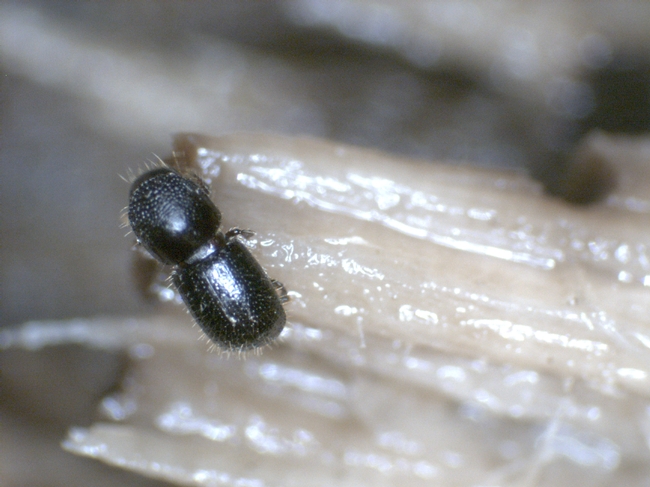
The Polyphagous shot hole borer (PSHB) (Fig. 1) and Kuroshio shot hole borer (KSHB) are invasive wood-boring beetles that attack dozens of tree species in Southern California, including commercial avocado groves, common landscape trees, and native species in urban and wildland environments. Both beetles spread a disease called Fusarium Dieback (FD), which is caused by pathogenic fungi. Trees that are FD-susceptible may experience branch dieback, canopy loss, and tree mortality (Fig. 2).
Insect Vector
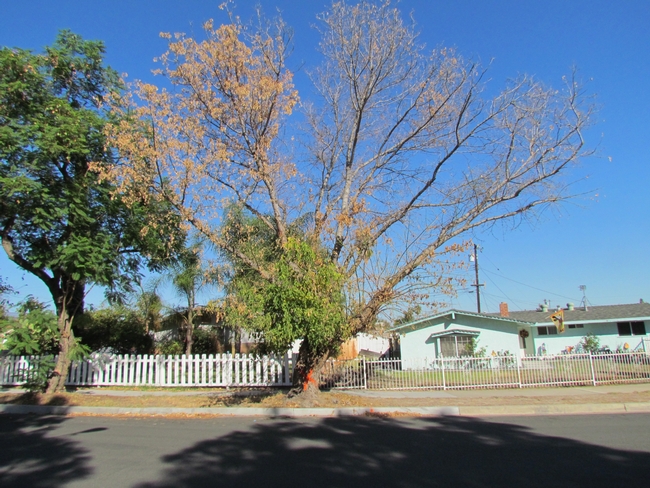
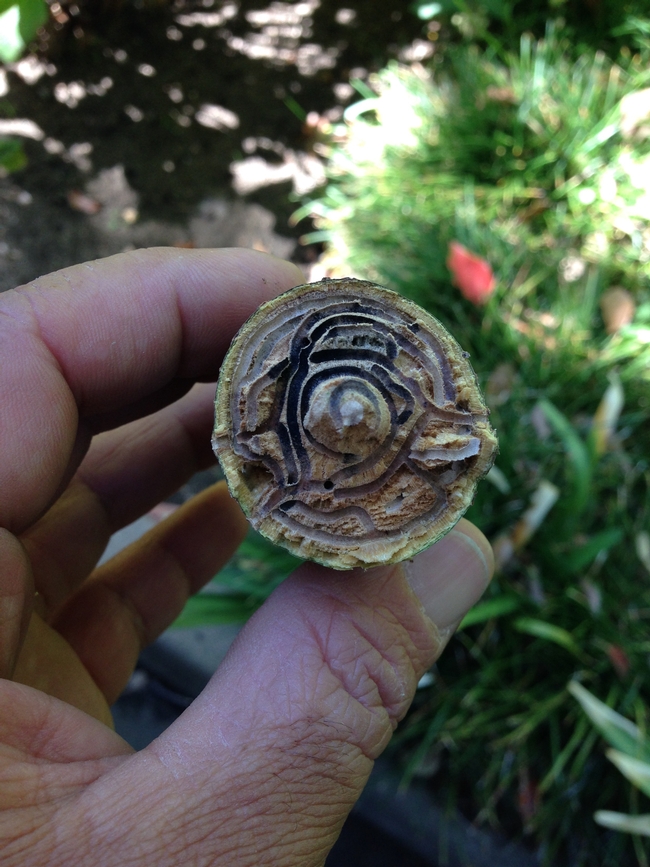
Symptoms
External: A host tree's visible response to disease varies among host species. Sugary exudate (also called a sugar volcano) (Fig. 4), staining (Fig. 5), gumming (Fig. 6), and frass (Fig. 7) are among symptoms that may be noticeable before the tiny beetles are found. The beetle's entry holes, which are approximately 0.03 inches (0.85 mm) in diameter, can be located beneath or near the symptoms. Advanced fungal infections will eventually lead to branch dieback.
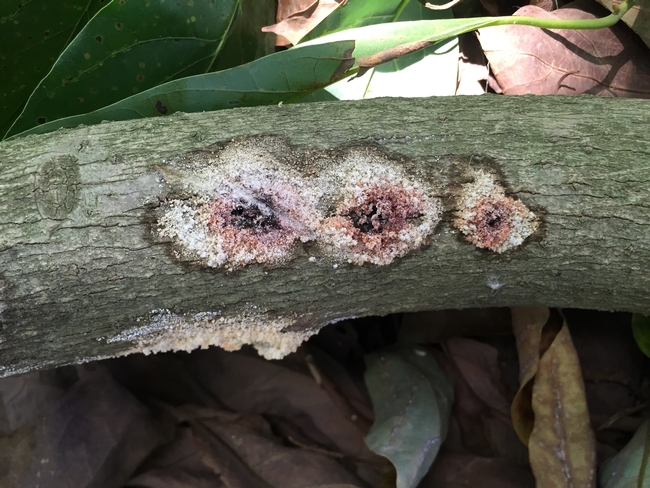

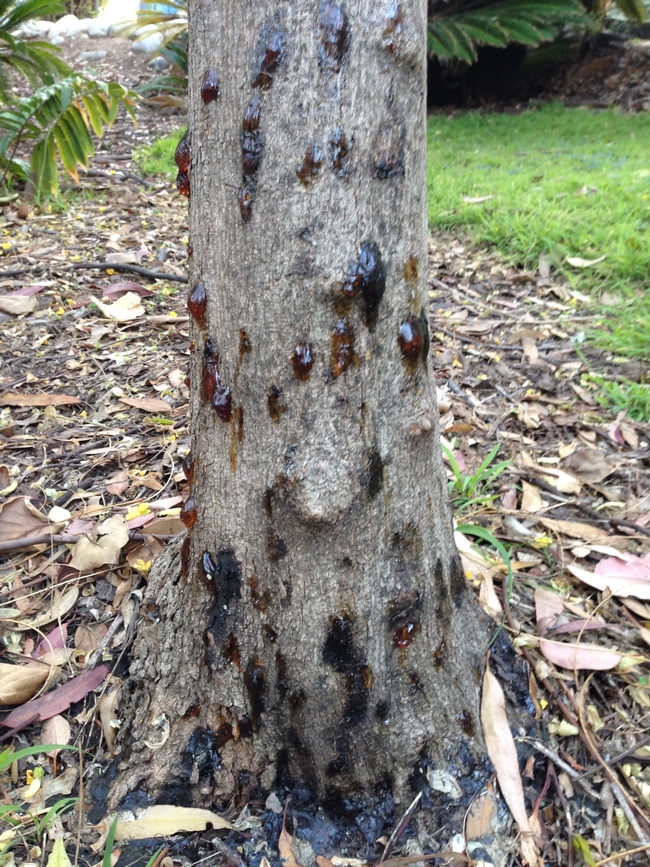
Internal: The fungi interrupt the transport of water and nutrients in branches of affected trees, leading to wood discoloration which can vary in color from brown to black. Shaving outer layer bark with a clean knife around beetle entry holes reveals obvious wood discoloration. Cross-sections of cut branches around affected areas show the extent of infection (Fig. 8).
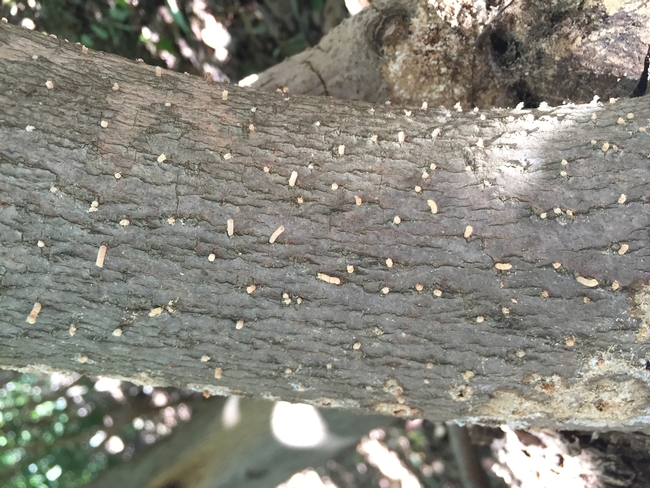
Management on Landscape Trees
Chemical and biocontrol management strategies are currently being investigated for this pest-disease complex. Early detection of infestation and removal of the infested branches will help reduce vector populations and the spread of this pest-disease complex.

Cultural/Sanitation Practices
The removal of the heavily infested reproductive hosts will help reduce vector populations and the spread of this pest-disease complex.
- Chip infested wood onsite to a size of one inch or smaller. If the branch is too large to chip, solarize them under a clear tarp:
- Have wood chips composted at a professional composting facility that has earned the U.S. Composting Council's Seal of Testing Assurance at: http://compostingcouncil.org/participants/. Sterilize pruning tools with either 5% household bleach, Lysol cleaning solution, or 70% ethyl alcohol to prevent the spread of the pathogens through pruning tools
- Avoid movement of infested wood and chipping material out of infested areas unless the material is covered or contained during transport.
- Transport wood or chips to a biogeneration facility (biogeneration facilities burn green waste and convert it into energy).
- Transport wood or wood chips to a landfill where it will be used as Alternative Daily Cover.
- July - August: cover chips/logs with sturdy plastic for at least 6 weeks. Temperatures during these months should be regularly above 95°F (35°C)
- September - June: cover chips/logs with sturdy plastic for at least 6 months
For more information, visit the UC Riverside Eskalen Lab website (http://eskalenlab.ucr.edu) or pshb.org.
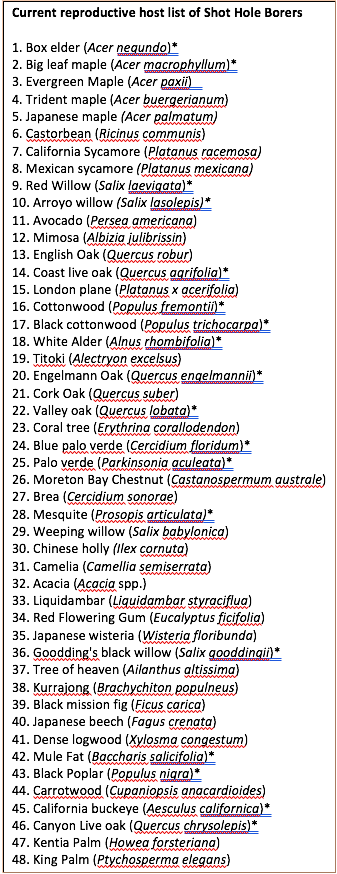
*Native species to California
~AkifEskalen1 akif.eskalen@ucr.edu, Joey S. Mayorquin1, Joseph D. Carrillo1, Shannon C. Lynch1, John Kabashima2, Tim Paine1, Richard Stouthamer1, Frank Byrne1 and Joseph Morse1. 1Department of Plant Pathology & Microbiology and Department of Entomology, University of California, Riverside. 2UCCE Orange County.
-all photos by Akif Eskalen.